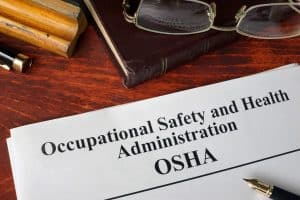OSHA’s Plans for Handling Violations in Oil and Gas Extraction
 The oil fields of North Dakota are filled with workers of all experience levels. There are some who have just entered the profession looking to make this a career, and others who are “lifers” in the oil industry closing in on retirement. No matter how long you’ve been working in oil and gas, you know that it is a dangerous job – both upstream and down.
The oil fields of North Dakota are filled with workers of all experience levels. There are some who have just entered the profession looking to make this a career, and others who are “lifers” in the oil industry closing in on retirement. No matter how long you’ve been working in oil and gas, you know that it is a dangerous job – both upstream and down.
As with all other professions, there are always underlying problems that can lead to accidents. There are policies and laws in place to protect employees of the oil and gas industry. But, how are fines issued? How are violations handled? Do these actually work as deterrents?
The top 10 violations in the oil and gas industry
The Occupational Safety & Heath Administration (OSHA) runs a Severe Violator Enforcement Program, which is designed “to more effectively focus enforcement efforts on recalcitrant
employers who demonstrate indifference to the health and safety of their employees through
willful, repeated, or failure-to-abate violations of the OSH Act.” It focuses on the most hazardous industries in the country. In 2015, it added oil and gas extraction, drilling, and related activities to the program, because these jobs – indeed, the oil and gas industry as a whole – has a high worker fatality rate.
Per Code Red, these are the Top 10 citations by OSHA for the oil and gas extraction industry:
- Hazard communications
- Respiratory protection
- Guarding floor and opening holes
- General duty
- Management of hazardous chemicals
- Medical services and first aid
- Electrical and wiring methods
- Lock out/tag out
- General requirements
- Mechanical power-transmission apparatus
How OSHA is combatting the problems facing oil and gas workers
In 2018, OSHA announced that they were renewing a Regional Emphasis Program for the Oil and Gas Industry. The program outlines new inspection requirements for oil and gas fields throughout the country, including the Bismarck region. Drilling sites are inspected on a random basis, as rigs are assigned numbers on the Monday of the week in which the Bismarck Area Office of OSHA will conduct inspections. If the top two selections are owned by the same person or company, the first site will be inspected and the second will be skipped and replaced with a site owned by a different entity.
Citations for violations will immediately follow these inspections. If the violations are serious enough, oil rigs could be shut down by OSHA during the inspection. Many inspections simply lead to violations that must be completed by the time provided on the violation notice. Fines might also be issued, though they could be reduced by OSHA at a later time or even waived, if the oil rig makes the necessary fixes to the issues present.
Know your workplace rights
Employees who work in inherently dangerous professions are still entitled to a safe work environment. It’s important for you to know your workplace rights, which include receiving training about workplace hazards, working in conditions that are free of serious harm or risk, and being able to file a complaint with OSHA about any unsafe conditions. Workers are also to be free from retaliation should they file a complaint.
Oil and gas extraction is dangerous, and it is important to hold companies which violate safety standards to account. If you were hurt while working in the patch, call Larson Law to discuss your injuries and how you can receive compensation: 701-484-4878. You can also fill out the contact form to schedule a free consultation at our Minot office.

Mark Larson is a Certified Civil Trial Specialist and Certified Civil Pre-Trial Specialist focusing on personal injury, car accidents, wrongful death, and oil field claims. Since 1979, Larson Law has served the injured throughout North Dakota. Read more about Mark V. Larson.
